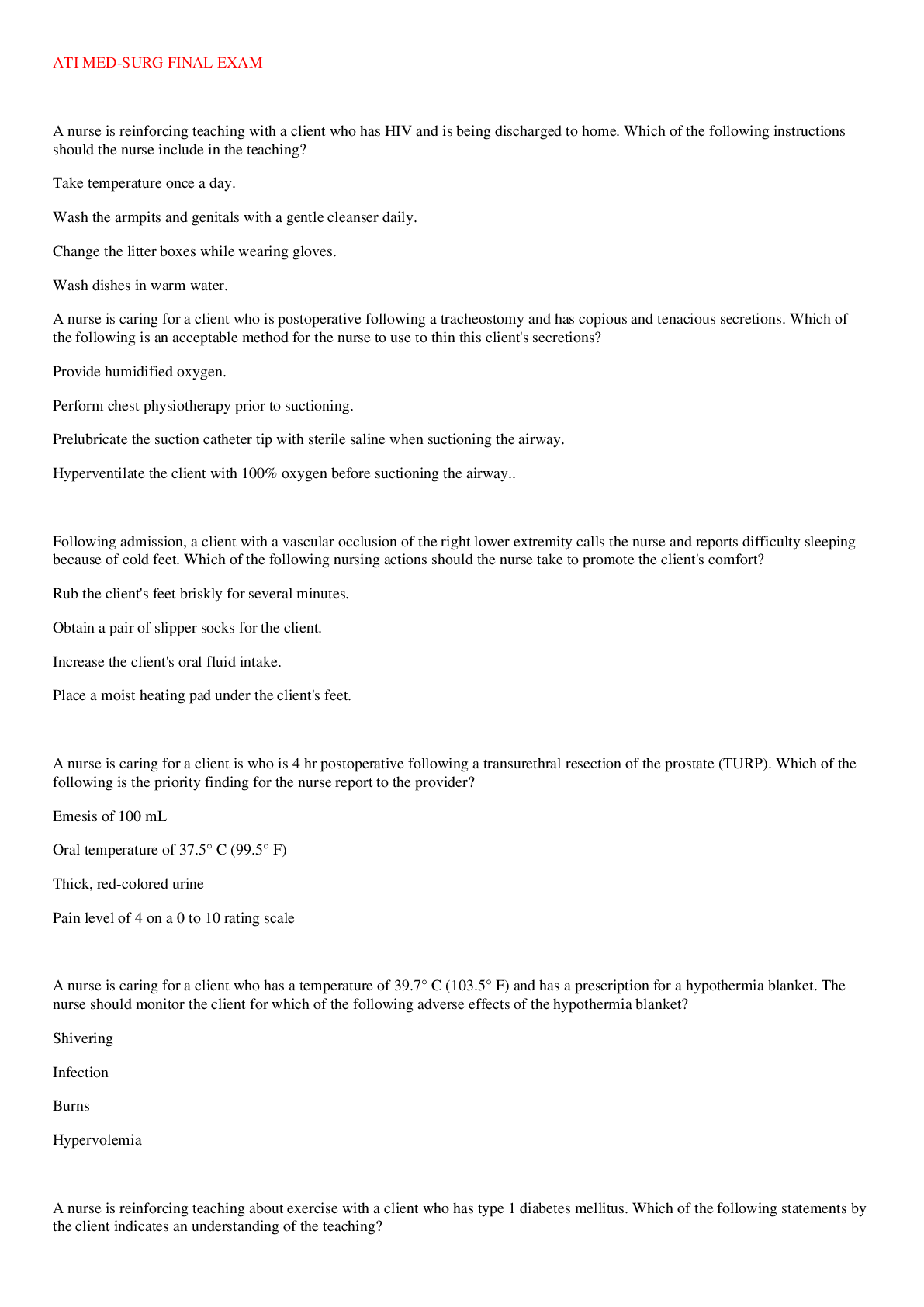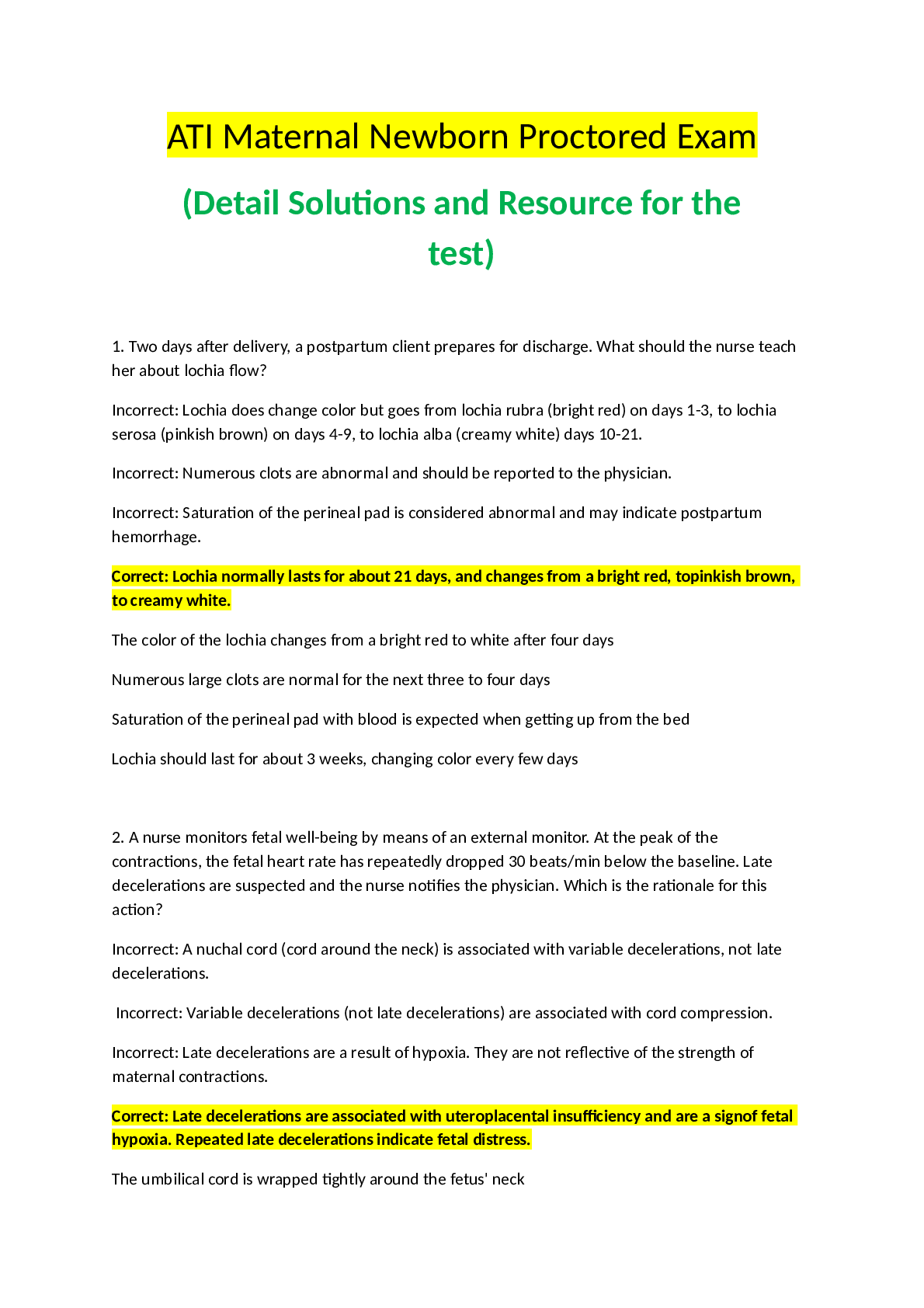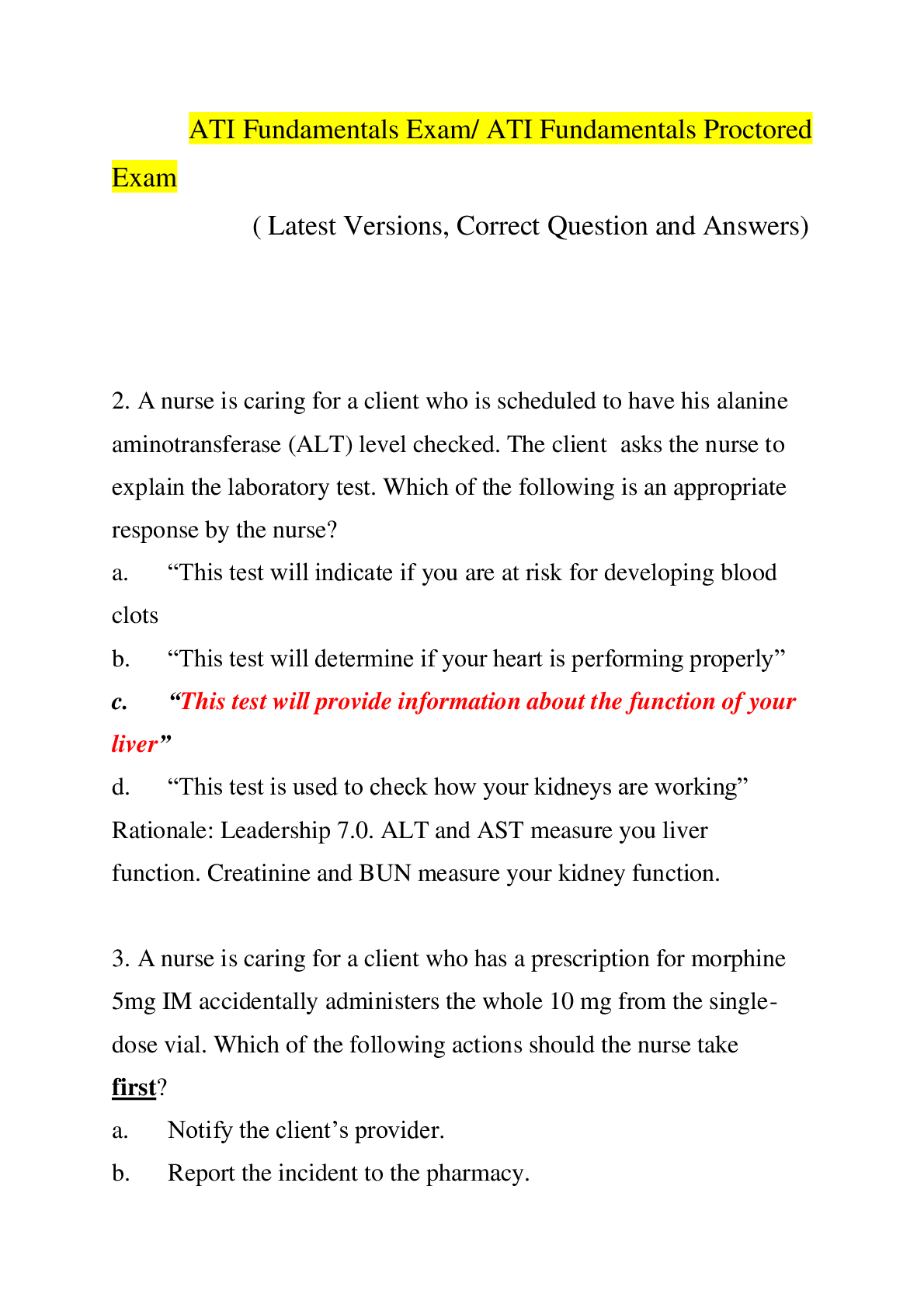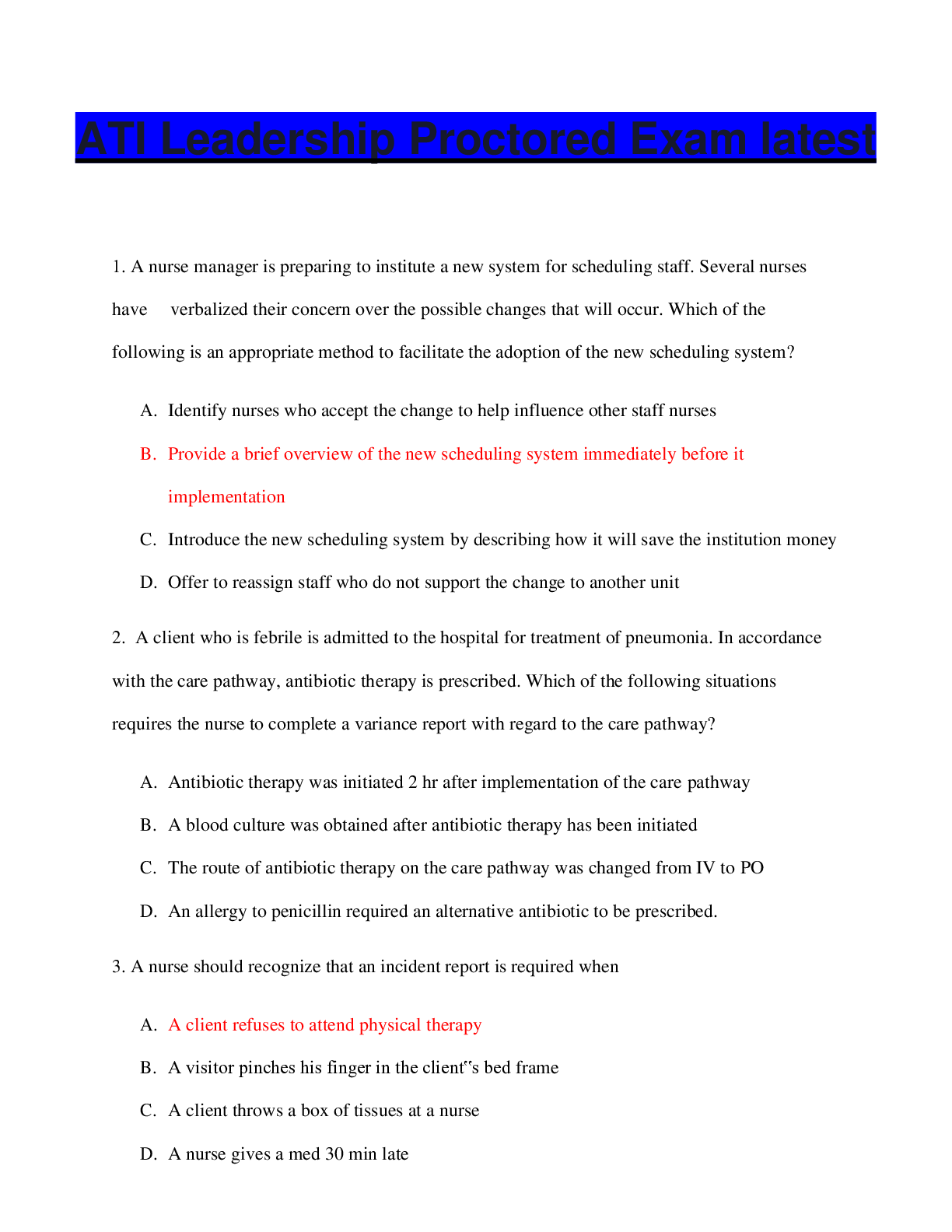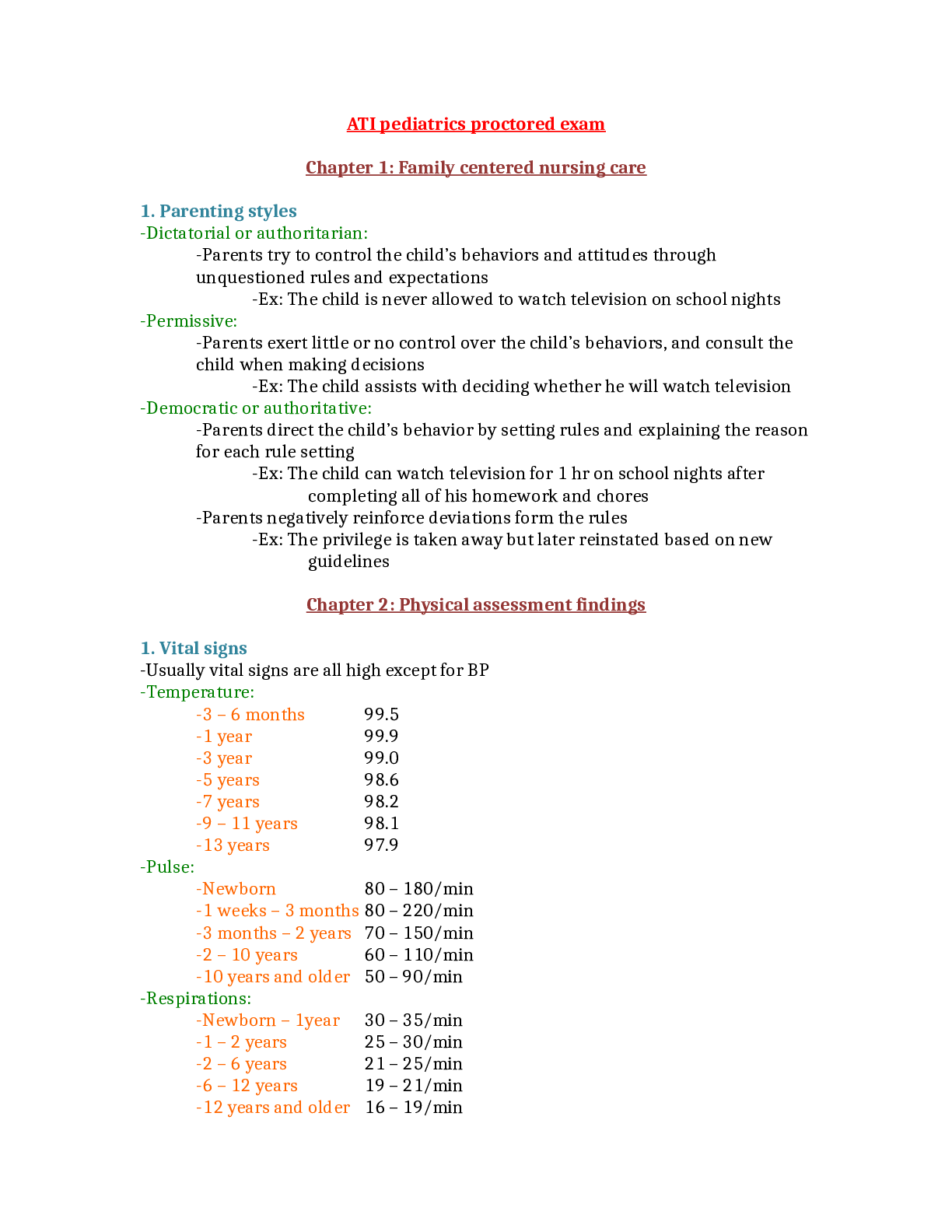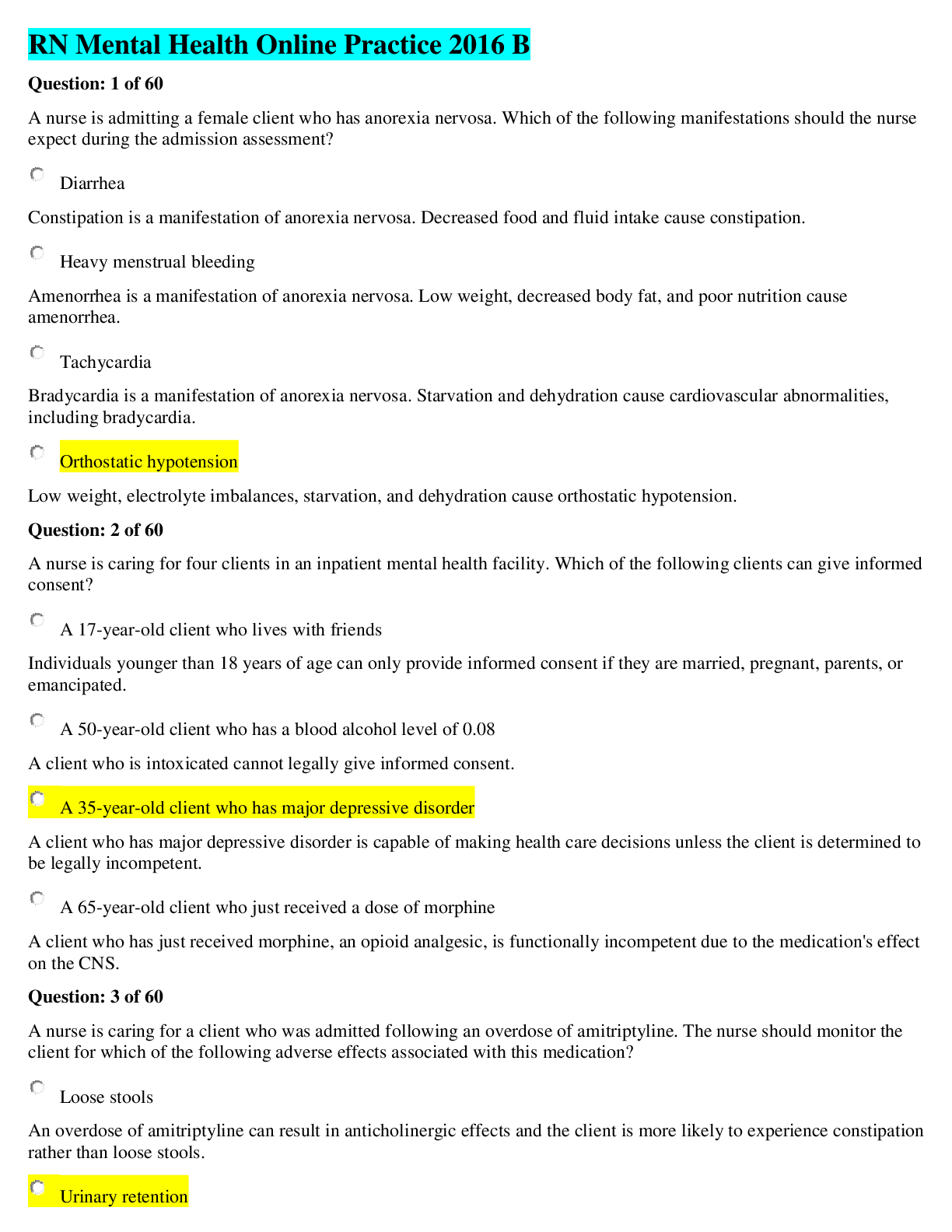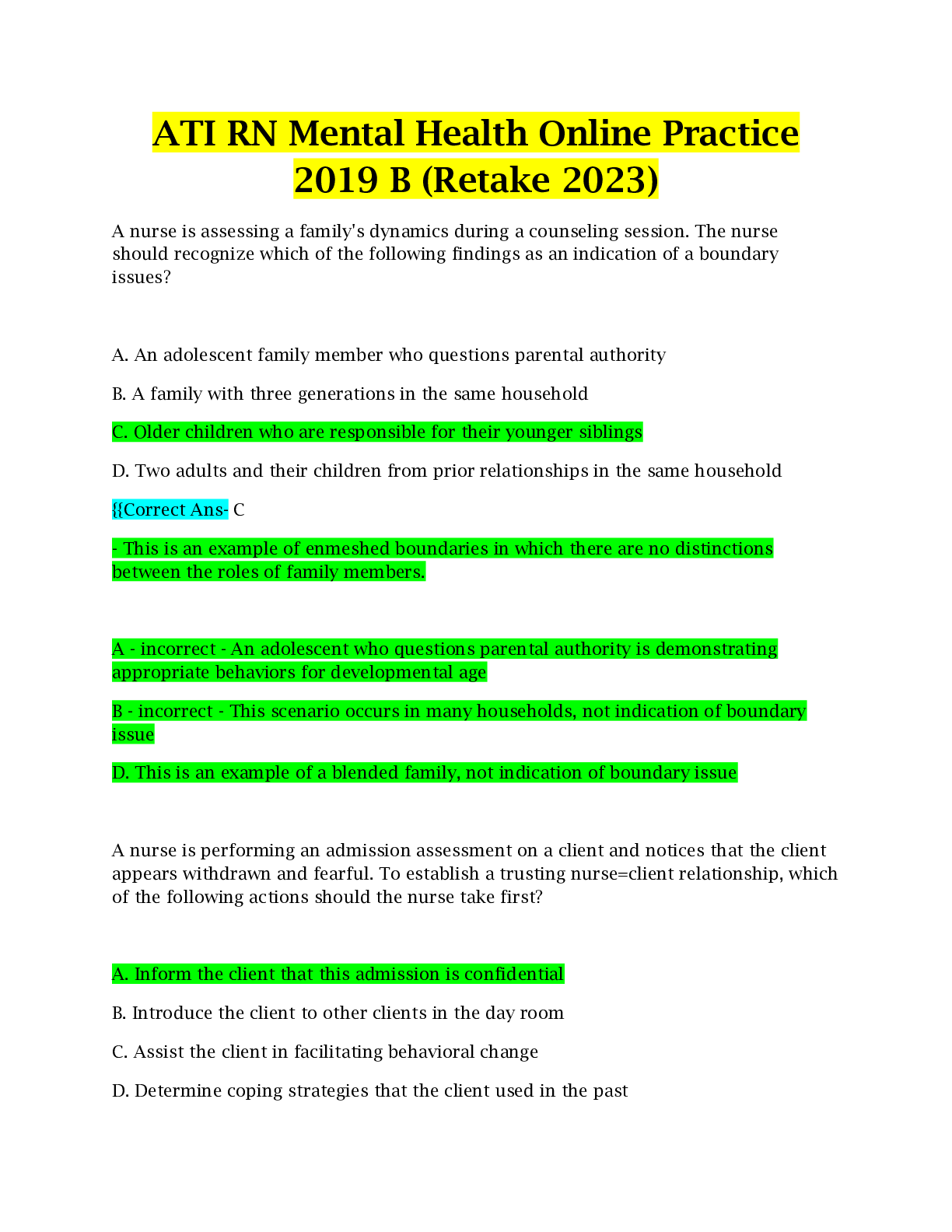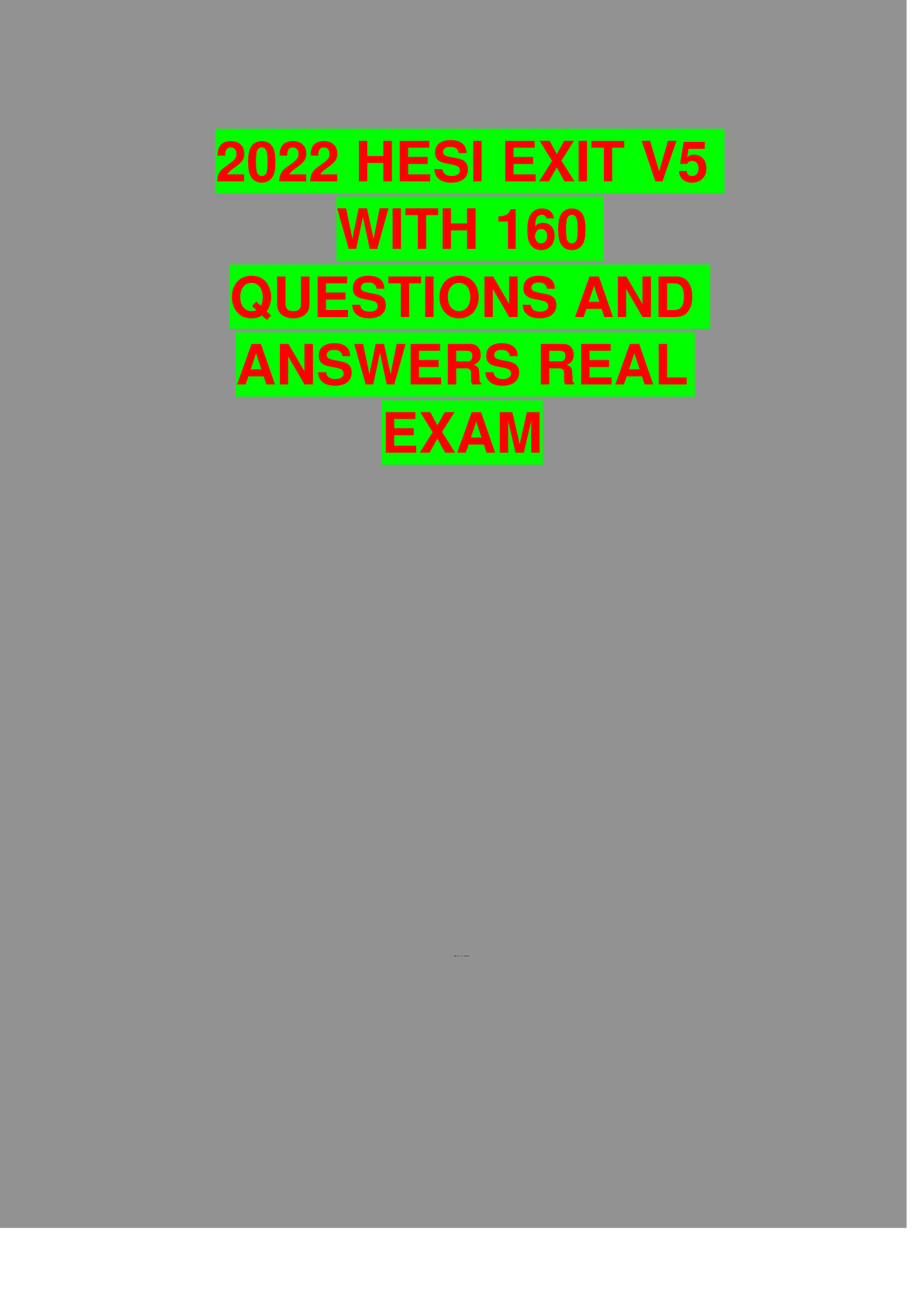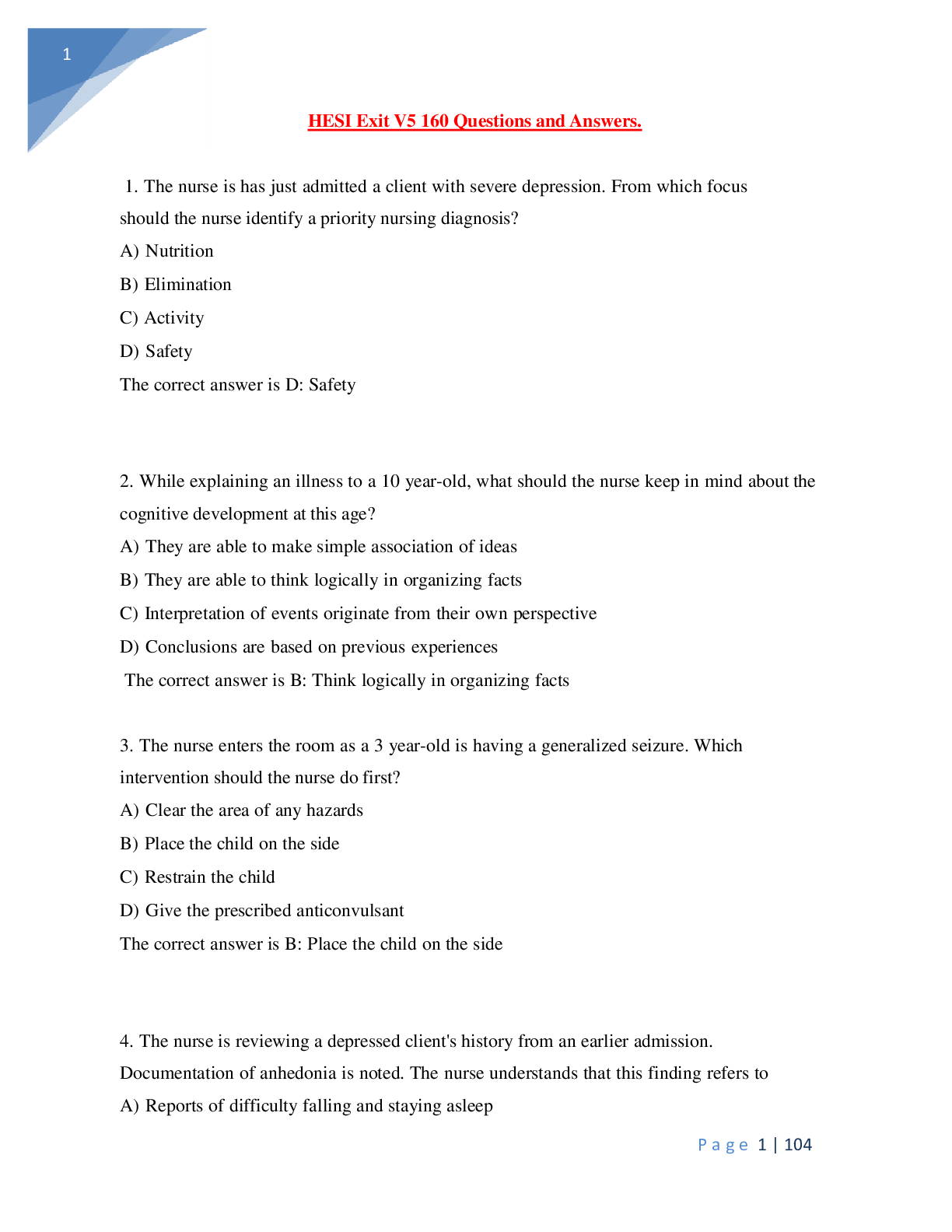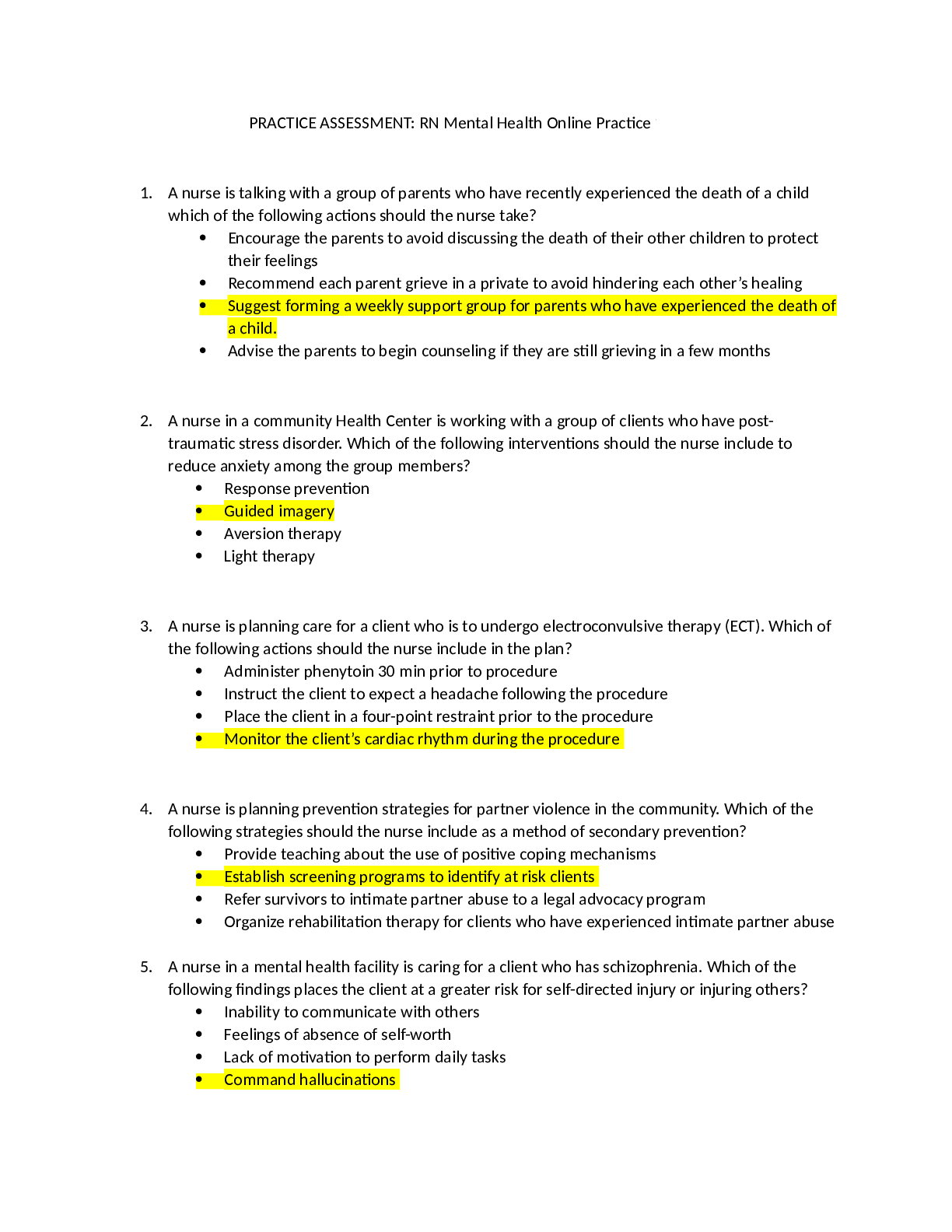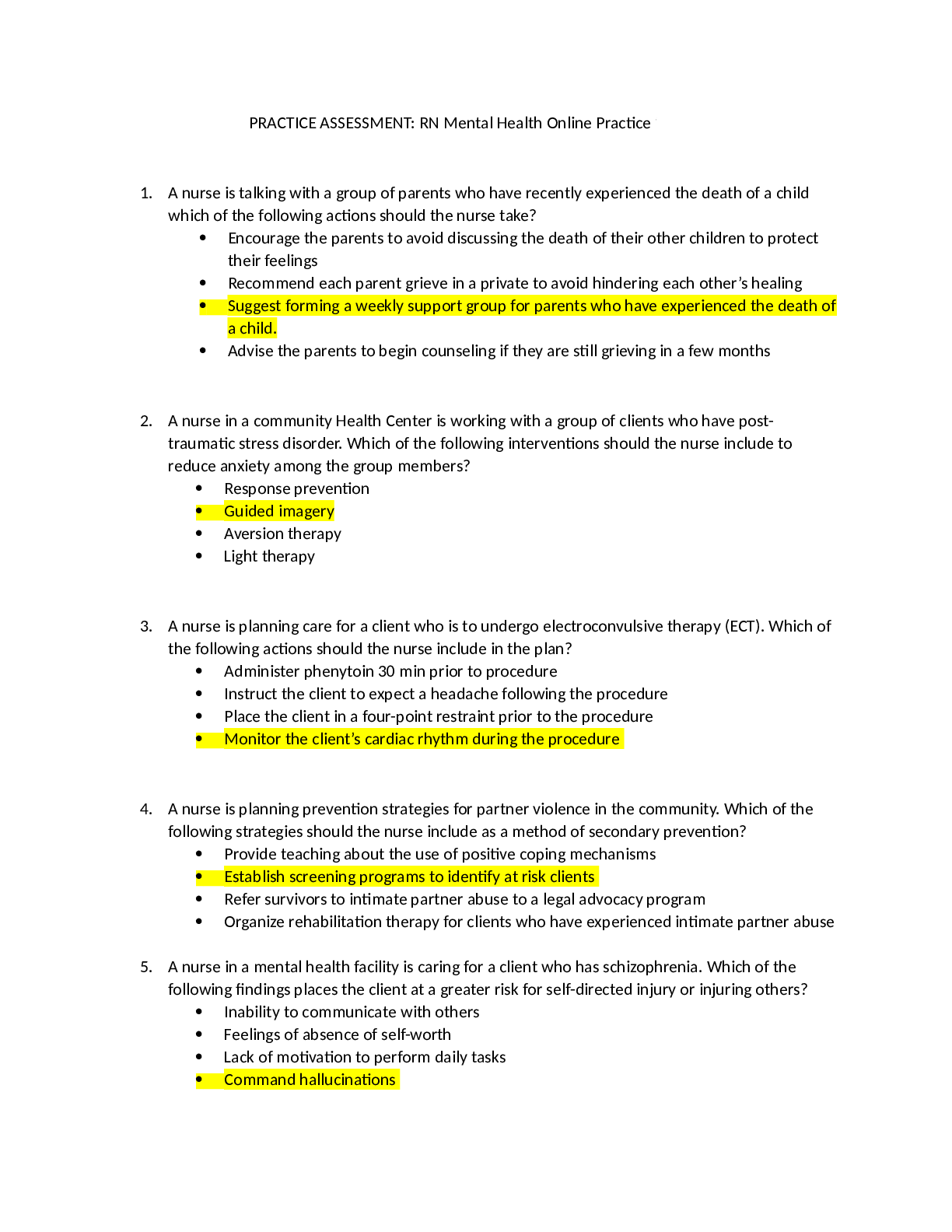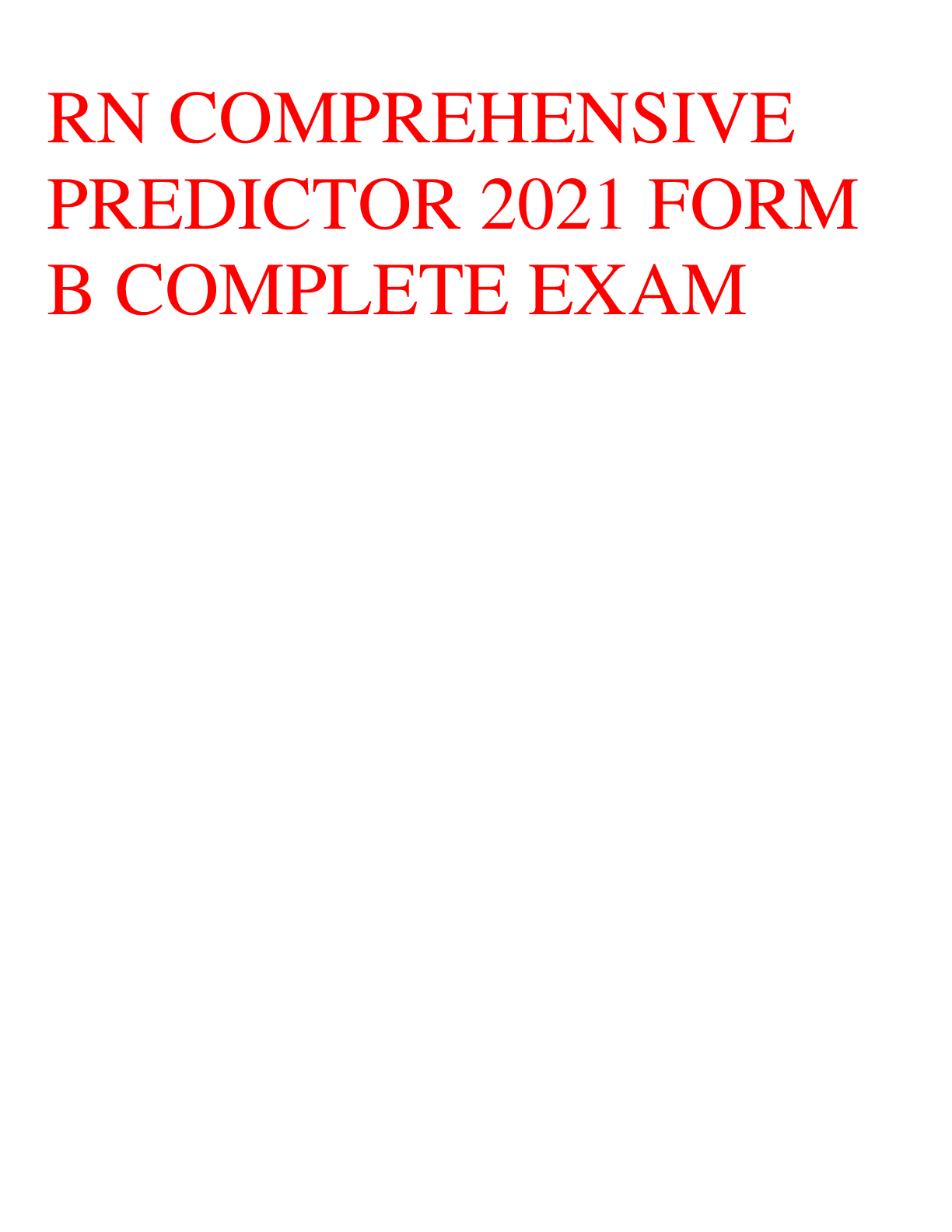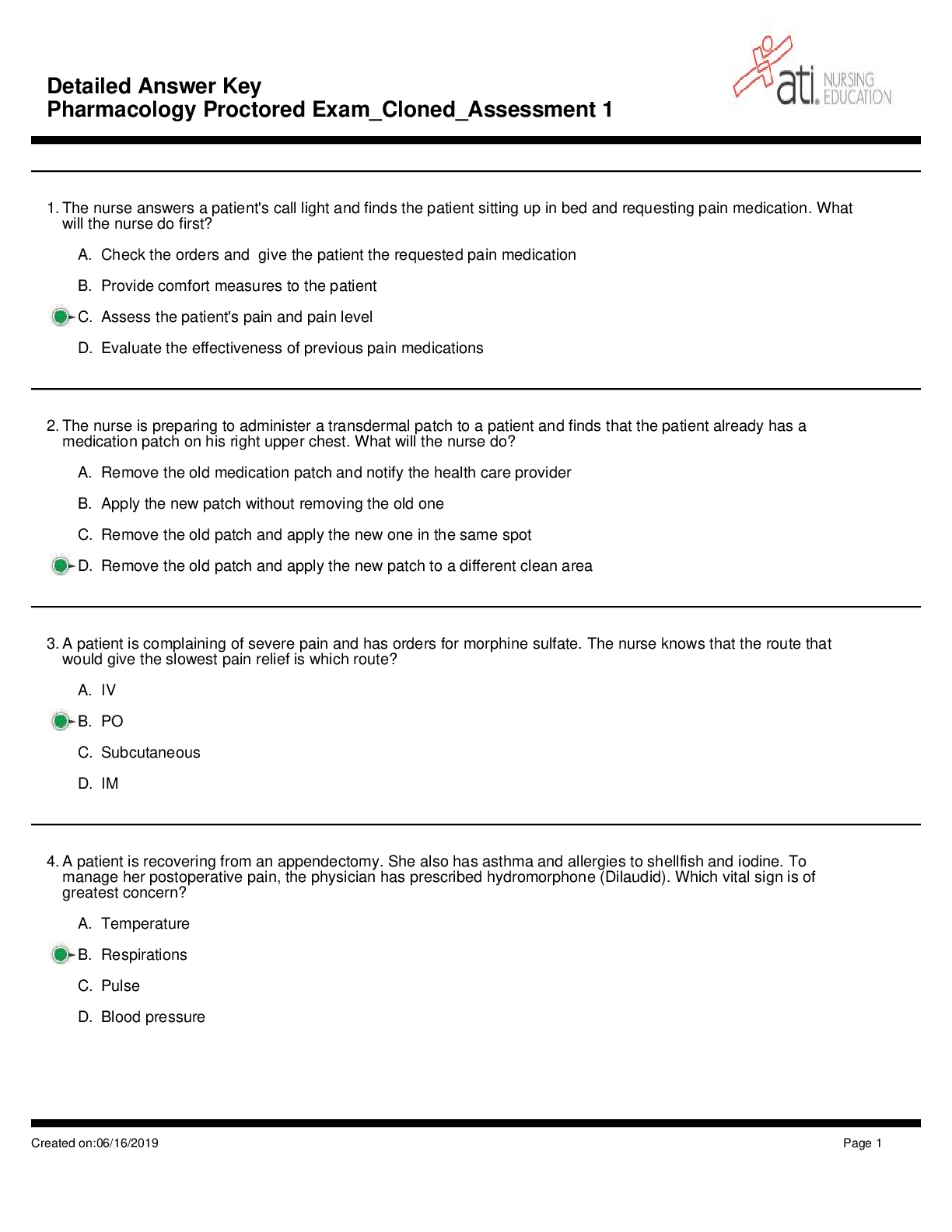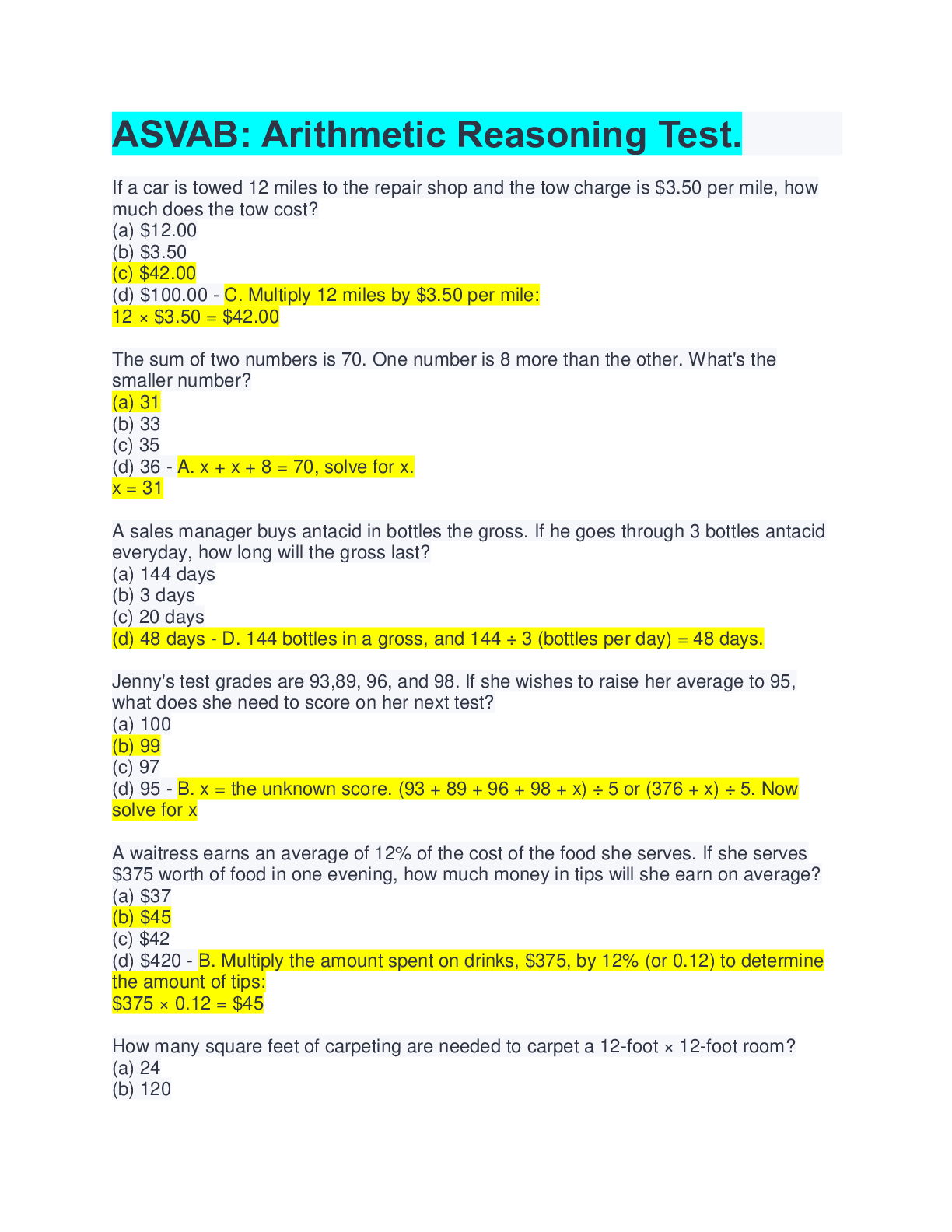*NURSING > EXAM PROCTORED > ATI RN Mental Health Online Practice 2020 B 60 Questions and Answers. A Graded. (All)
ATI RN Mental Health Online Practice 2020 B 60 Questions and Answers. A Graded.
Document Content and Description Below
1. A nurse is caring for a client whose child has a terminal illness. The client requests information about how to deal with the upcoming loss. Which of the following statements should the nurse make:... a. "It will be better for you to keep busy to avoid thinking about your child's death." Encouraging the client to avoid thinking about the child's death will not allow the client to begin anticipatory grieving. b. "You will complete the grieving process about a year after your child's death." The grief process has no timeline. It varies for each individual. c. "The grief process will start once your child actually dies." The client can begin anticipatory grieving during the child's illness. d. "It is not uncommon to feel angry toward yourself or others." Feelings of blame and anger towards oneself or others are an expected reaction when a client is experiencing a loss. 2. A nurse is teaching a client who has bipolar disorder and a prescription for lithium. Which of the following instructions should the nurse include in the teaching? a. "Take this medication with food." Lithium can cause gastrointestinal distress. Therefore, this medication should be taken with food. b. c. d. "Reduce sodium intake to 1,000 milligrams each day." The client should maintain an adequate and consistent sodium intake to decrease the risk for lithium toxicity. The recommended sodium intake for adults is 1,500 mg/day. "Limit fluid intake to 1,200 milliliters each day." The client should consume 2,000 to 3,000 mL/day of fluids during initial treatment with lithium. "Be aware that this medication can be addictive." Lithium is not classified as an addictive medication. 3. A nurse is planning care for four clients in a mental health facility. Which of the following clients is at the greatest risk for injury when performing ADLs a. A client who has severe Alzheimer's disease The greatest risk to this client is injury from performing ADLs. Clients who have severe Alzheimer's disease are typically confused, have memory difficulties, tend to wander, and need assistance to perform ADLs. A client who is in the maintenance phase of schizophrenia Clients who are in the maintenance phase of schizophrenia are calm and able to provide self-care with minimal risk for injury. Therefore, another client is at a greater risk for injury. A client who has obsessive-compulsive disorder A client who has obsessive-compulsive disorder typically performs ADLs repetitively and precisely. The client should be able to provide self-care with minimal risk for injury. Therefore, another client is at a greater risk for injury. A client who has dysthymic disorder Clients who have dysthymic disorder may have low energy or chronic fatigue, but they should be able to provide self-care with minimal risk for injury. Therefore, another client is at a greater risk for injury. b. c. d. 4. A nurse who works with newborns is assessing the potential for abuse or neglect. Which of the following family groups should the nurse identify as the highest potential for future child abuse a. A family in which both parents are adolescents A family in which both parents are adolescents indicates a risk for the parents to become abusive toward the newborn due to lack of experience and knowledge regarding parenting. However, another family group is at a higher risk for potential abuse. b. A family in which the parents respond indifferently toward their newborn A family in which the parents act indifferently about their newborn indicates a risk for the parents to become abusive toward the newborn due to impaired bonding. However, another family group is at a higher risk for potential abuse. c. A family where one or both parents witnessed intimate partner violence in the home as children Parents who witnessed intimate partner violence as children are more likely to become abusive themselves. Therefore, this is the family group with the greatest potential for future child abuse. d. A family in which one or both parents has a developmental disability A family in which one or both parents have a developmental disability indicates a risk for the parents to become abusive toward the newborn due to difficulty learning new skills. However, another family group is at a higher risk for potential abuse. 5. A nurse is performing an admission assessment on a client and notices that the client appears withdrawn and fearful. To establish a trusting nurse-client relationship, which of the following actions should the nurse take first a. Inform the client that her admission is confidential. According to evidence-based practice, the nurse should first inform the client about confidentiality during the orientation phase of the nurse-client relationship. b. c. d. Introduce the client to other clients in the day room. The nurse should introduce the client to other clients in the day room to help the client interact with others during the working phase of the nurse-client relationship. However, evidence-based practice indicates that the nurse should take a different action first. Assist the client in facilitating behavioral change. The nurse should assist the client with behavioral change during the working phase of the nurse-client relationship. However, evidence-based practice indicates that the nurse should take a different action first. Determine coping strategies that the client has used in the past. The nurse should determine what coping strategies the client used in the past during the working phase of the nurse-client relationship. However, evidence-based practice indicates that the nurse should take a different action first. 6. A nurse is admitting a client who has schizophrenia to an acute care setting. When the nurse questions the client regarding his admission, the client states, "I'm red, in the head, and I'm going to bed!" The nurse should document the client's speech pattern as which of the following a. Clang association The nurse should document that the client's speech uses clang associations, which often rhyme or contain a string of words that can have the same beginning sound. b. c. d. Word salad In word salad, words are completely meaningless and disorganized. This client's speech pattern is not word salad. Neologism Neologism consists of words that are made up by the client. This client's speech pattern does not contain neologisms. [Show More]
Last updated: 1 year ago
Preview 1 out of 40 pages
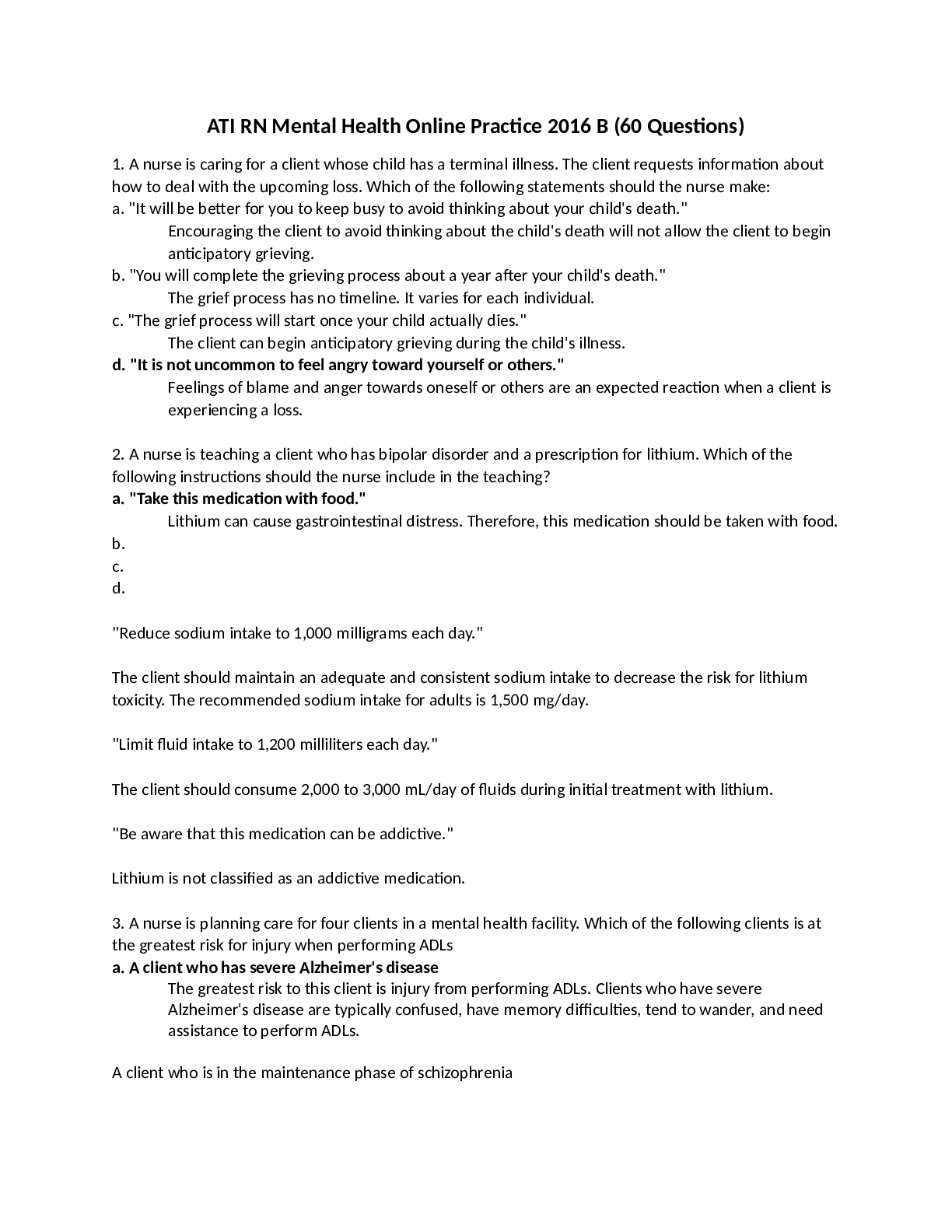
Reviews( 0 )
Document information
Connected school, study & course
About the document
Uploaded On
Nov 09, 2020
Number of pages
40
Written in
Additional information
This document has been written for:
Uploaded
Nov 09, 2020
Downloads
0
Views
63

